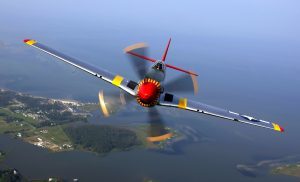
Because the usage of aircraft is not limited to a specific country, a large number of national regulations apply in the aviation sector.
The problem, however, is that fire protection in aircraft is not regulated worldwide by an independent organization such as the International Civil Aviation Organization (ICAO).
The guidelines of the Federal Aviation Administration (FAA), the American aviation supervisory authority, are applied worldwide.
However, these Federal Aviation Regulations (FAR) represent national regulations of the USA.
You can read how extensive these regulations are in the following PDF 14 CFR 25.853 (up to date as of 3-20-2023)
A short description of the CFR (Code of Ferderal Regulation) 14 CFR § 25.853 – Interior equipment of the compartments – you can get here.
Read more...
For each compartment occupied by the crew or passengers, the following apply:
(a) Materials (including finishes or decorative surfaces applied to the materials) must meet the applicable test criteria prescribed in part I of appendix F of this part, or other approved equivalent methods, regardless of the passenger capacity of the airplane.
(b) [Reserved]
(c) In addition to meeting the requirements of paragraph (a) of this section, seat cushions, except those on flight crewmember seats, must meet the test requirements of part II of appendix F of this part, or other equivalent methods, regardless of the passenger capacity of the airplane.
(d) Except as provided in paragraph (e) of this section, the following interior components of airplanes with passenger capacities of 20 or more must also meet the test requirements of parts IV and V of appendix F of this part, or other approved equivalent method, in addition to the flammability requirements prescribed in paragraph (a) of this section:
- (1) Interior ceiling and wall panels, other than lighting lenses and windows;
- (2) Partitions, other than transparent panels needed to enhance cabin safety;
- (3) Galley structure, including exposed surfaces of stowed carts and standard containers and the cavity walls that are exposed when a full complement of such carts or containers is not carried; and
- (4) Large cabinets and cabin stowage compartments, other than underseat stowage compartments for stowing small items such as magazines and maps.
(e) The interiors of compartments, such as pilot compartments, galleys, lavatories, crew rest quarters, cabinets and stowage compartments, need not meet the standards of paragraph (d) of this section, provided the interiors of such compartments are isolated from the main passenger cabin by doors or equivalent means that would normally be closed during an emergency landing condition.
(f) Smoking is not allowed in lavatories. If smoking is allowed in any area occupied by the crew or passengers, an adequate number of self-contained, removable ashtrays must be provided in designated smoking sections for all seated occupants.
(g) Regardless of whether smoking is allowed in any other part of the airplane, lavatories must have self-contained, removable ashtrays located conspicuously on or near the entry side of each lavatory door, except that one ashtray may serve more than one lavatory door if the ashtray can be seen readily from the cabin side of each lavatory served.
(h) Each receptacle used for the disposal of flammable waste material must be fully enclosed, constructed of at least fire resistant materials, and must contain fires likely to occur in it under normal use. The capability of the receptacle to contain those fires under all probable conditions of wear, misalignment, and ventilation expected in service must be demonstrated by test.
International agreements determine which national test procedures correspond to each other and are accepted. In this area in particular, there are a large number of very strict regulations, as it takes more time for passengers to land safely and evacuate than it does for land-based modes of transport.
The delivery conditions of the aircraft manufacturers and the airlines partly contain requirements beyond the FAR, especially with regard to smoke development and the toxicity of the fire gases.
The safety concept also includes a post-crash fire.
Further specialist information can be obtained from the German Aerospace Center (DLR), Institute of Propulsion Technology, Engine.
The Group Fire Protection focuses on fire safety issues of aviation materials and aircraft. The Material Testing Centre for Fire Behaviour (MPB) integrated in this area is one of the few internationally recognised testing centres in Europe with extensive test equipment for the certification of aviation materials (NBS and OSU chambers) and the possibility of carrying out large-scale full-scale fire tests.
